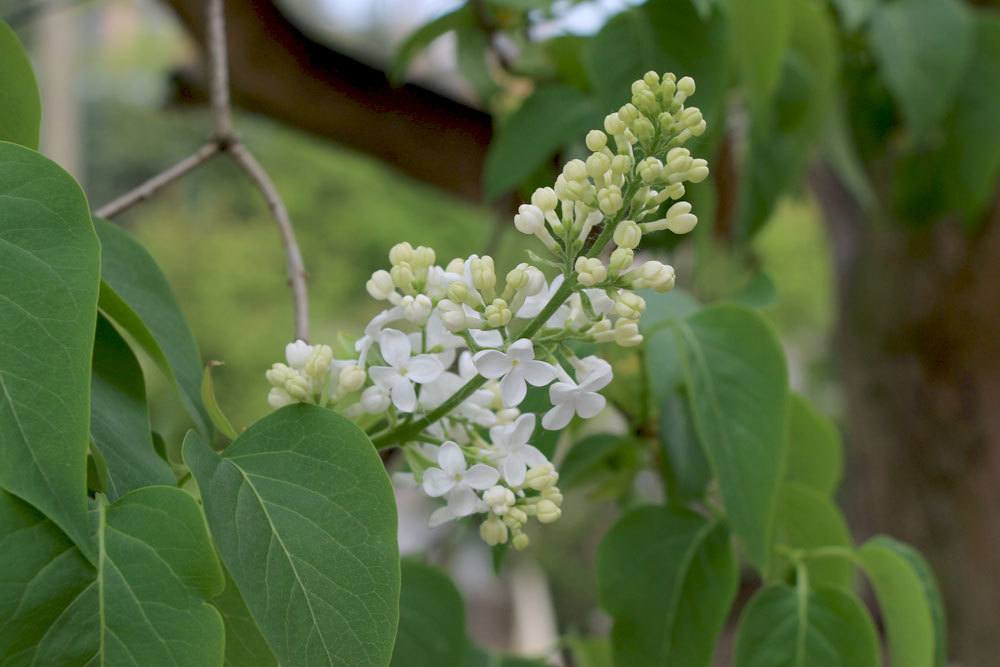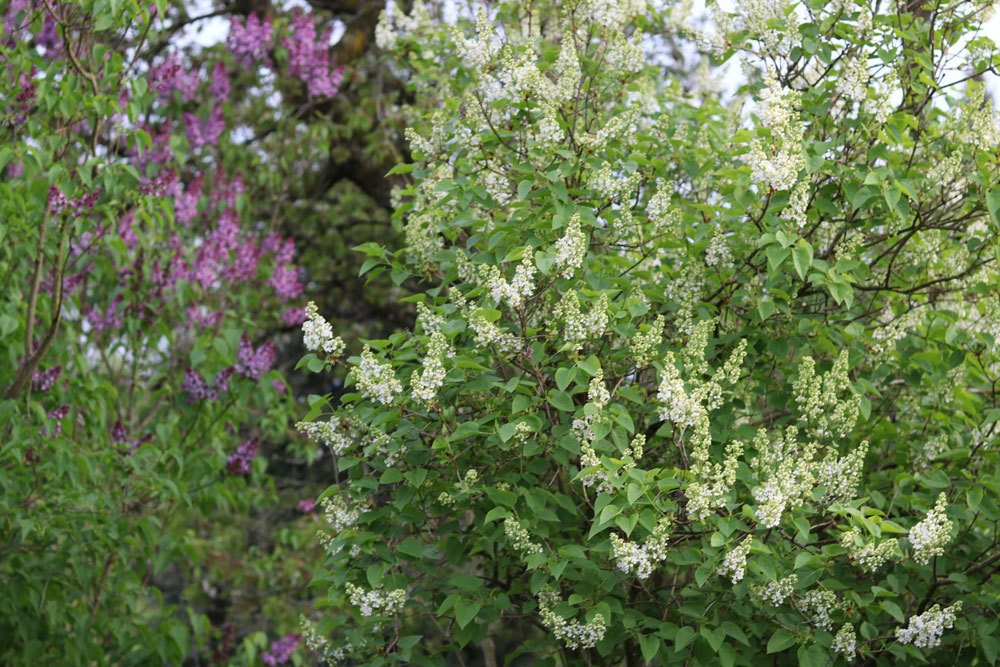Last updated on October 23rd, 2023 at 08:34 pm
Lilac is one of the exquisite ornamental shrubs that bloom magnificently without pruning. Nevertheless, there are important reasons to prune a lilac tree. Sometimes it is even unavoidable to radically rejuvenate a Syringa vulgaris. This green guide explains in detail when and how to do it right. Under what conditions you can give an old lilac tree a new lease of life with a rejuvenation pruning, find out here.
Contents
Cutting requirements
These criteria signal the need for pruning
As long as your lilac is in full bloom every May, pruning will cause more harm than good. All lilacs bloom on their biennial wood, provided that the woody plant can set its buds in peace. If the one-year-old shoots already fall victim to the shears, the hope of a lavish bloom is gone.
At least in the first 5 to 7 years of life, the natural development should not be interfered with scissors and saw. If the ornamental shrub is getting on in years, the following characteristics signal that pruning is now advisable.
- the lilac is getting too big
- the flowers appear more and more sparsely
- the shrub or the crown is becoming bare from the inside
- the shrub loses its compact, dense growth habit and falls apart
If you cultivate lilac shrubs as a hedge, annual pruning is obligatory as soon as the plants have reached the desired growth height. The naturally loose habit will only keep prying eyes off your property if you prune the hedge regularly.
Timing for pruning
The best time is after flowering
Do any of the above criteria for topiary and maintenance pruning apply to your lilacs? If so, you will affect the next bloom the least if you prune the woody plant immediately after flowering. Choose a mild, overcast, dry day in June. At this time, the one-year-old shoots have not yet set buds for next year’s bloom, or have only begun to do so.
If it is your intention to merely thin out the crown on the lilac tree or shrub, we recommend the deciduous period as the time. If a Syringa vulgaris has shed its foliage in late autumn, you will have an excellent view of the framework. Thus, in the period between November and February, you can make an informed decision about the extent to which this pruning should be done.
Instructions for pruning
Instructions for proper cutting
Please have sturdy pruning tools ready, as you are dealing with one of the hardest wood species in lilacs. Not only should the saw and shears be sharp, but they should also be disinfected. By rubbing the blades with high-proof alcohol, any pathogens are reliably removed.
Thus, the pruning proceeds in an exemplary manner:
- cut back all withered flowers to the first pair of leaves
- cut all dead, stunted branches on the trunk
- cut off the weaker of the branches that are too close together or rubbing against each other
- prune too long shoots by a quarter, so that at least 4 eyes remain on the branch
- place the scissors a few millimeters above a leaf node or bud
To continuously rejuvenate a lilac, cut off the two oldest branches to 20 cm every 2 to 3 years. In this way, you effectively prevent senescence, so you never have to radically prune a magnificent lilac tree. It is advisable to prune out the withered flowers from the first flowering period, so that a young lilac does not invest any energy reserves in the growth of seed heads. Please always limit pruning to the unleaved area below the wilted flowers.
If you cultivate a grafted lilac tree in your garden, it consists of two segments. A noble, flowering lilac has been grafted onto a wild rootstock. This method is a double-edged sword. On the one hand, the scion benefits from the vigor and resistance of the wild rootstock.
On the other hand, wild shoots continuously sprout from the rootstock to overgrow the noble segment. Please remove these water shoots as soon as they catch your eye. Instead of cutting them, tear off steeply upward growing shoots with a hearty jerk. This way, no tissue remnant remains from which a new water shoot can make its way.
Cut off root shoots
Cut off root shoots and do not cut them
Non-grafted, common lilac tends to spread invasively with root suckers. In conjunction with this propagation tactic, root suckers sprout from its runners even at great distances from the tree or shrub. These are not subject to normal pruning in early summer.

As a rule, they have not reached a conspicuous height of growth until autumn. Cutting or uprooting will not fix the problem. Instead, prune off the root stolon in question with a spade and dig up the sapling along with its own roots.
Special case of rejuvenation pruning
If no single form and maintenance pruning is carried out for years or decades, the woody plant visibly becomes senescent. Considering the enormous vigor of a lilac, you should not immediately throw in the towel and consider uprooting it. By radically pruning back and rejuvenating an old lilac tree or shrub, you give it new vigor. Unlike normal topiary, in this case the winter dormant season makes sense as a date.
This is how you proceed professionally:
choose a frost-free day in the period between November and February
Have a sturdy, freshly sharpened saw and anvil pruning shears ready as tools.
cut back the 3 to 4 youngest main shoots to a height of 20 to 30 cm
Prune all remaining old shoots close to the ground or to the branch ring.

With the help of the 3 to 4 leading shoots build a new framework in the crown and shrub. In the following two years, flowering will not occur because the bud-bearing branches must first develop. Nevertheless, in the fall after rejuvenation pruning, cut off all puny new shoots per leading branch, leaving only the two strongest and best-placed lateral branches.
If necessary, repeat this measure in the fall of the following year until a harmonious basic structure has developed on the lilac. After the first bloom, the rejuvenation pruning then leads into the normal, restrained pruning for a Syringa vulgaris.


